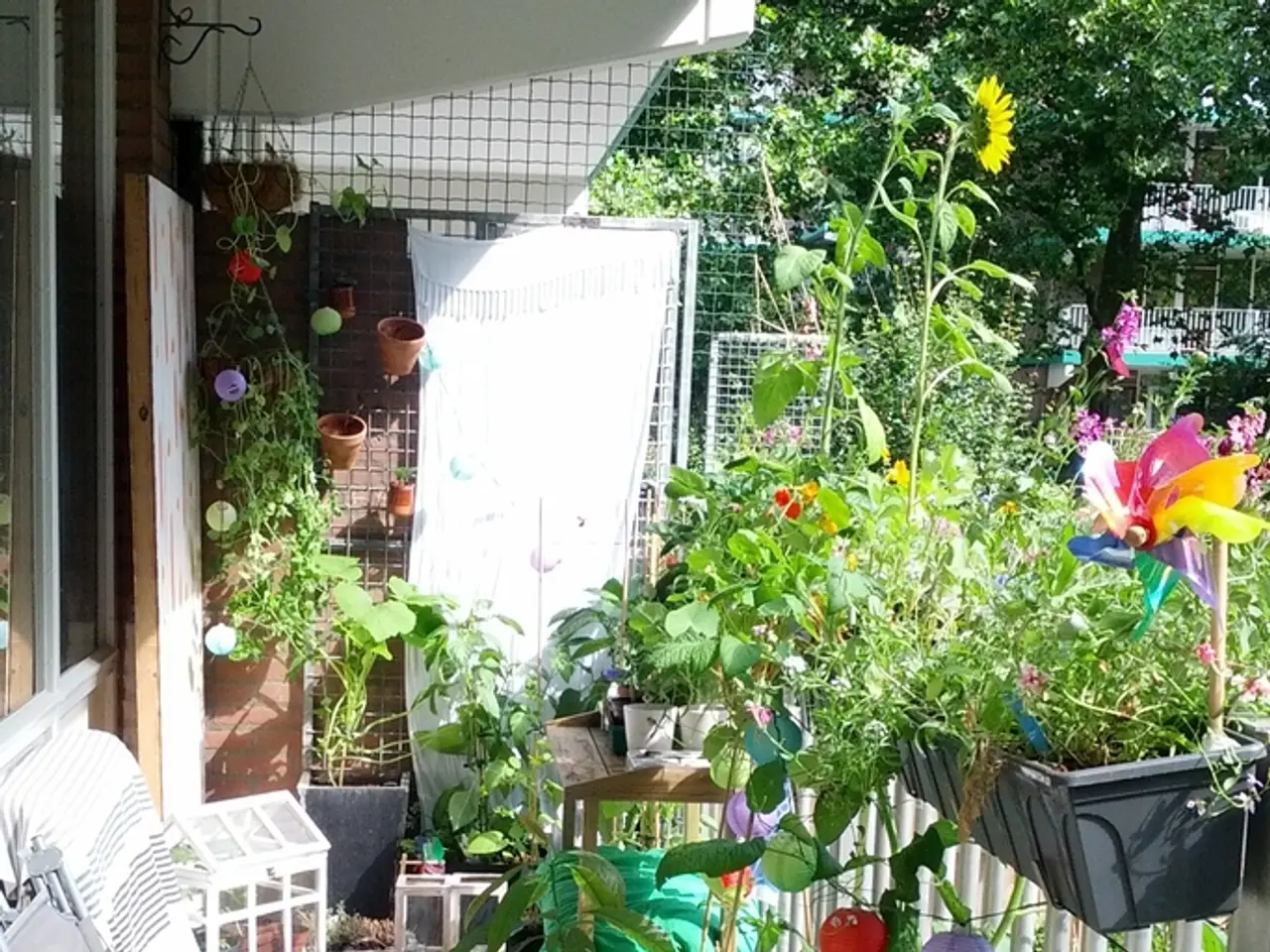Nourishing Blueberries in Containers: Yielding Juicy Summer Delights in Potted Form
Blueberry Heaven in Pots
- Growing your own blueberries just got easier
- Container Gardening made simple
- Pick, Plant, and Enjoy
Ready to boost your nutrient intake and taste the deliciousness of blueberries? With container gardening, you can grow these superfoods right in your own backyard, no matter how limited your space. Here's your step-by-step guide to a satisfying blueberry crop year after year.
How Easy Is This?
If you're short on ground space or worried about soil issues, growing blueberries in pots is the way to go. Dwarf or half-high varieties are ideal for containers, as they're easier to manage and require less space. No need to fuss with lowering soil pH or dealing with compacted, clay soil.
Your Blueberry Picker's Guide
First off, let's discuss your pot selection. A spacious pot with drain holes is essential, and ensure it's weatherproof and can sustain sun exposure and rainfall. Black plastic containers can heat up quickly, so choose something else. For a young plant, start with a 5-gallon pot, then move up to a larger one as it grows. A mature plant needs at least a 24-inch deep and wide pot to thrive.
Blueberry Varieties to Love
Given the variety of options available, you're sure to find the perfect blueberry cultivar for your container. Good choices include 'Northblue', 'Jelly Bean', 'Northsky', and 'Chippewa'. For smaller fruit, go with 'Top Hat', a lowbush option with a spreading growth habit. Just remember that some varieties require a second, cross-pollinating cultivar, while others are self-fruitful.
The Blueberry Grower's Handbook
To make sure your blueberries bear fruit efficiently, keep these tips in mind:
- Light & Warmth: Blueberries love sun but can also perform well in some shade. Protect from intense afternoon sun. A sunny spot will result in larger, sweeter berries.
- Watering: Blueberries require consistent moisture, but don't like standing water. Water regularly but gently to maintain soil moisture. Deeper watering once every two weeks helps remove excess salt. Stick to rainwater if possible; using acidic mulch like pine bark or chipped hardwood bark helps maintain soil moisture.
- Soil: Go for well-draining, acidic soil with a pH between 4.5 and 5.5. You can buy potting soil at a garden store or create your own mix of equal parts peat moss and shredded pine bark. Adding coir (shredded coconut husks) and sphagnum peat moss with a bit of perlite creates another suitable mix.
- Fertilizer: Use an acidic-based fertilizer in early spring before bud break. Four weeks after planting, add slow-release acidic blueberry fertilizer. Top-dress the following spring, following the manufacturer's recommendations.
- Pruning: In the first year, trim the blossoms to promote root development and stronger stems. Prune annually while dormant, focusing on diseased, damaged, or crossing branches to improve airflow and productivity.
- Repotting: If your young plant outgrows its container, repot it in late autumn or early spring into a larger pot (about 6-8 inches wider in diameter). Keep the potting mix acidic.
Problems, Pests, and Solutions
Birds love berries as much as we do, so consider using bird netting to keep them from becoming your yard's main crop. Common blueberry pests include thrips, aphids, and blueberry blossom weevils. Swift action with organic controls like neem oil spray or removing damaged leaves can help manage these critters. If you encounter weevils, shaking the stems of your plant can help dislodge and remove them.
Winterizing Your Blueberries
Growing any plant in a container makes it more vulnerable to cold. Subtract one hardiness zone number for container-grown blueberries when choosing a variety. To overwinter your plant, bury it in the ground in mid-autumn, using a spot that's protected from wind. Later, apply 4-8 inches of straw and cover the plant with a burlap bag, water occasionally, and dig it up in spring. Alternatively, store the potted shrub in an unheated building like a barn or garage over winter, watering occasionally.
Enhance your blueberry patch with some blue and purple ornamentals for an extra pop. Our Shop features stunning options for both plants and pots!
FAQs
Can I grow blueberries in a 5-gallon bucket?
How long does it take for blueberry bushes to produce fruit?
Find more gardening tips, videos, info and a free copy of "How to Grow Delicious Tomatoes" by signing up for our newsletter.
Teo Spengler is a master gardener and docent at the San Francisco Botanical Garden. With extensive experience in horticulture and writing about plants and gardening for over two decades, Teo has encountered a range of climates and embraced the passion for trees and plants.
Janey Goulding is a Content Editor.
Enrichment Data: To successfully grow dwarf or half-high blueberry varieties in pots, essential considerations include pot selection, soil requirements, fertilizing, pruning, pest control, and overwintering. Use an appropriate pot size and secure drainage; choose well-draining, acidic soil with a pH between 4.5 and 5.5; apply sparing fertilizer in early spring and again in late spring to early summer; prune annually to remove dead, weak, or crossing branches; inspect plants regularly for pests and use appropriate insecticidal soaps or horticultural oils; overwinter plants in a protected location or bury them in the ground for the winter.
To create a home-and-garden style complementing your blueberry garden, consider adding some charming ornamental plants in blues and purples to your blueberry patch, available in our Shop.
When selecting a pot for your container-grown blueberries, choose a spacious and weatherproof pot with drain holes, avoiding black plastic containers that tend to heat up quickly.






